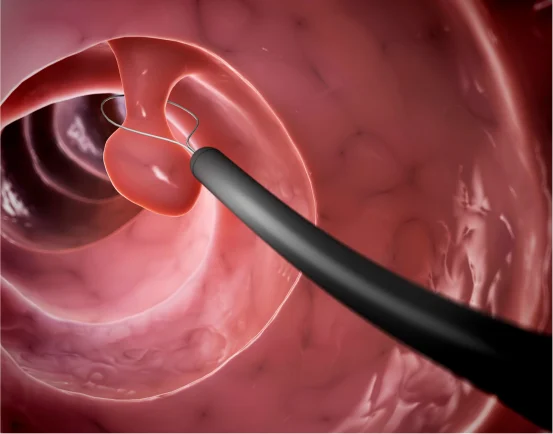Peroral Endoscopic Myotomy (POEM) is a minimally-invasive procedure to treat the esophageal motility disorder particularly Achalasia. This revolutionary endoscopic procedure has changed the way gastroenterologists handle patients with dysphagia (difficulty in swallowing) or chest pain or regurgitation caused by an abnormal activity of the esophageal muscle. Understanding of types of peroral endoscopic myotomy.
POEM involves the use of a flexible endoscope in your mouth in order to create the procedure of a myotomy which cuts muscles located at the lower part of the esophagus. This allows liquids and food to be absorbed more easily by the stomach.
With the advancements in endoscopic procedures continue, various kinds of POEM have been developed to meet diverse anatomical needs in addition to disease variations and the patient’s profile. This blog will look at the different types of Peroral Endoscopic Myotomy and their application as well as their benefits and drawbacks.
Why Different Types of Peroral Endoscopic Myotomy Exist
Although the standard POEM method is successful for a lot of patients but not all patients have the same problem. The different thickness of muscles and duration of disease, the presence of scarring, or co-existing problems require specific surgical approaches. Different kinds of POEM are designed to:
-
Increase the precision of surgical procedures
-
Reduce the risk of the risk of complications
-
Cater to various subtypes motility disorders
-
Treat associated disorders such as spastic disorders, sigmoid esophagus or spastic
1. Conventional POEM (Classic POEM)
Overview:
This is the most common and most commonly used method. It’s typically performed for the type I and type II Achalasia.
Procedure:
-
The tunnel is created within the submucosal lining that starts mid-esophagus.
-
Circular muscle fibres in the lower esophageal and sphincter (LES) are cut selectively.
-
The mucosal opening is closed using endoscopic clips.
Benefits:
-
Effective in decreasing LES pressure
-
Achalasia is suitable for the mid- to early stage of the disease.
-
Very minimally invasive, with quick recovery
Limitations:
-
Ineffective in patients who have an sigmoid-shaped the esophagus or significant fibrosis
2. Modified POEM (Hybrid POEM)
Overview:
A hybrid or modified POEM can be described as a mix of POEM with laparoscopic surgical techniques to deal with complicated cases.
Procedure:
-
Similar submucosal tunneling to that seen in the classic POEM
-
Other tools and methods such as laparoscopic reinforcement or extended myotomy
-
It is used when fibrosis or anatomical variation makes it difficult for pure endoscopic approaches.
Benefits:
-
More suitable for patients with previous unsuccessful Myotomy Heller or submucosal scarring that is extensive
-
This allows for more aggressive cutting without compromising safety.
Limitations:
-
A little longer recovery time
-
The patient may require an additional sedation, or anesthesia
3. Short-Tunnel POEM
Overview:
A submucosal tunnel that is shorter is made, which limits the dissection area to the essential portion of the esophagus.
Procedure:
-
Tunnel is longer than traditional POEM
-
Typically, it is used to treat an early achalasia or focal motility conditions
Benefits:
-
Reduces procedure time
-
Reduces the risk of complications, such as mediastinitis
-
It is suitable for certain patient profiles
Limitations:
-
Not as effective for spastic conditions.
4. Posterior POEM
Overview:
The direction of the endoscope is altered as is the passageway constructed by the posterior wall of the esophagus instead the anterior wall.
Procedure:
-
Posterior dissection permits easier access in certain anatomical variations.
-
This could cause less reflux when compared to POEM anterior
Benefits:
-
It is useful to making it easier to redo POEM procedures
-
It may provide lower than a post-operative GERD (gastroesophageal reflux disorder)
Limitations:
-
Technically difficult
-
Not as often
5. Double-Scope POEM (DS-POEM)
Overview:
This requires using the use of two endoscopes that are used to help with myotomy and one to monitor tunnel formation from the stomach side.
Procedure:
-
The second scope confirms the length and orientation of tunnel.
-
Enhances precision during myotomy
Benefits:
-
Enhances safety and visibility
-
Ideal for teaching or for complex anatomical cases
Limitations:
-
Needs more equipment and a skilled team
-
Improves the speed of procedure
6. G-POEM (Gastric POEM or Peroral Pyloromyotomy)
Overview:
Although it is not strictly esophageal in nature, G-POEM uses a similar method for treating the gastroparesis through cutting of the pyloric Sphincter.
Procedure:
-
Submucosal Tunnel is formed in the stomach wall.
-
Myotomy is a procedure performed on the pyloric muscles
Benefits:
-
Effective for gastric emptying issues.
-
Utilizes POEM expertise in a revolutionary anatomical site
Limitations:
-
It is only indicated for gastroparesis and not for esophageal problems.
Risks and Considerations of POEM Techniques
Although POEM is regarded to be safe and efficient, each type comes with its own risk factors:
-
Perforation or bleeding (rare)
-
GERD Particularly after the classic POEM because of the loss of LES pressure
-
Anesthetic-related problems
-
Infections If mucosal closure insufficient
The best type of POEM is dependent on:
-
Health status and age of the patient.
-
The severity and type of disease
-
The experience of the surgeon and facilities resources
Recovery After POEM Surgery
The recovery process is usually quick for the majority of patients:
-
Home in 1-2 days
-
Resuming fluids within 24 to 48 hours
-
Moving to a gentle diet in a couple of weeks
Regular follow-up by an endoscopic examination and manometry in the esophageal area is essential to evaluate the outcome and control post-operative symptoms such as GERD.
Conclusion
Peroral Endoscopic Myotomy (POEM) has revolutionized the treatment of esophageal motility issues, and the rise of different POEM types is a sign of the increasing demand for customized and precision-focused medical treatment. From the classic to the modified shorter-tunnel and posterior POEMs Each approach has its own advantages that are tailored to specific circumstances in clinical practice.
If you’re having difficulty swallowing, chest pain that isn’t explained or regurgitation, you should consult an gastroenterologist, or surgical endoscopist skilled to perform types of peroral endoscopic myotomy procedures to determine the most effective treatment options























